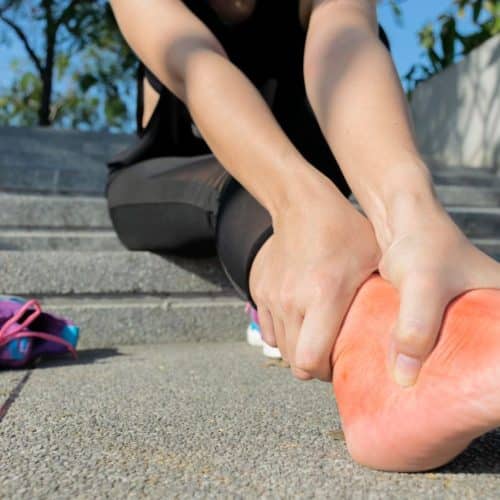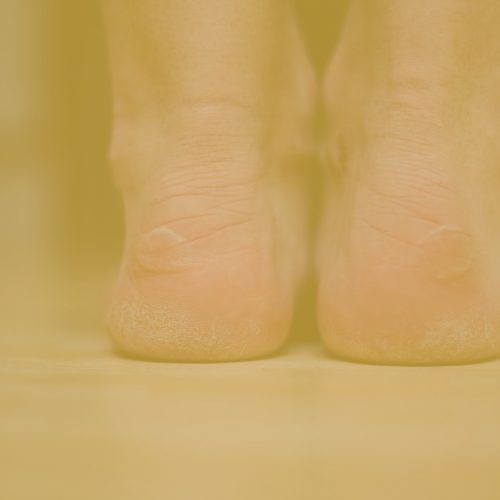Have you ever experienced that sharp cramp in your leg or that dull ache in your foot that makes every step challenging? If you have, you’re certainly not alone. Leg and foot pain are common issues affecting anyone, from athletes to office workers. What causes these discomforts? Is there more to it than just overexertion or wearing the wrong shoes? This article delves deep into the reasons behind leg and foot pain, providing insights that could alleviate your discomfort and improve your quality of life.
Common Causes of Leg Pain
Leg pain can arise from various factors, often stemming from the intricate network of muscles, bones, joints, and nerves that comprise our lower limbs. Understanding these underlying causes can help us manage and address leg pain effectively.
1. Nerve Compression: Pinpointing the Culprit
Compression of a nerve, sometimes referred to informally as a “pinched nerve,” is one of the most prevalent causes of leg discomfort. When tissues in the surrounding area, such as muscles, tendons, or bones, put pressure on a nerve, this condition can develop.
An excellent illustration of this is the condition known as sciatica, which occurs when the sciatic nerve, which extends from the lower back all the way down to the legs, becomes compressed. This results in stabbing pain, tingling, and numbness along the course that the nerve travels. A herniated disc or spinal stenosis are two examples of conditions that might contribute to the compression of a nerve, which can result in pain that travels down the leg.
2. Muscle Strain: When Overexertion Takes a Toll
Muscle strain, often due to overexertion or sudden movements, is another prevalent cause of leg pain. Engaging in strenuous activities without proper warm-up or technique can lead to microscopic tears in muscle fibres, causing localised pain and tenderness. This type of pain is characterised by its intensity and location. Whether it’s a strained hamstring from an intense workout or a calf muscle strain from sudden acceleration, the discomfort can range from a mild ache to a sharp, shooting pain that limits mobility.
3. Vascular Issues: The Role of Blood Flow
The intricate network of blood vessels plays a vital role in maintaining healthy leg function. Poor blood circulation or vascular diseases can contribute to leg pain, particularly during physical activities. Conditions like peripheral artery disease (PAD) can lead to narrowing of the arteries that supply blood to the legs, restricting the flow of oxygen-rich blood. This can result in cramping, aching, and pain, often triggered by exertion. Individuals with PAD may experience relief when at rest as blood flow isn’t as strained.
4. Arthritis: Joints Under Pressure
Arthritis, a condition characterised by inflammation of the joints, can affect the legs and contribute to pain and discomfort. Osteoarthritis and rheumatoid arthritis are two common forms that impact joint health. Osteoarthritis occurs due to the gradual wear and tear of joint cartilage, leading to pain, stiffness, and reduced range of motion. Rheumatoid arthritis, on the other hand, is an autoimmune disorder that causes joint inflammation and can affect multiple joints, including those in the legs. The pain associated with arthritis is often chronic and can vary in intensity.
Contributing Factors to Foot Pain
Foot pain can disrupt daily life and hinder mobility, making it important to understand the various factors contributing to its occurrence. From footwear choices to structural abnormalities, here’s a closer look at what can lead to foot discomfort.
1. Improper Footwear: The Impact of Shoe Choices
The shoes we wear play a significant role in foot health. Ill-fitting or unsupportive footwear can lead to various foot problems and pain. High heels, for instance, can alter the foot’s natural position, putting excessive pressure on the front of the foot and leading to discomfort. Similarly, narrow shoes can squeeze the toes and lead to issues like bunions and ingrown toenails. Shoes lacking proper arch support can strain the arches and lead to conditions like plantar fasciitis. Choosing shoes that provide proper support and fit well is essential to avoid potential foot pain.
2. Plantar Fasciitis: Dealing with Heel Pain
Plantar fasciitis is a common condition that causes pain in the heel and arch of the foot. It occurs due to inflammation of the plantar fascia, a thick band of tissue that runs along the bottom of the foot, connecting the heel to the toes. This condition often leads to stabbing pain, particularly in the morning or after periods of inactivity. High-impact activities or prolonged standing can exacerbate the pain. Individuals with flat feet or high arches may be more susceptible to developing plantar fasciitis.
3. Overuse Injuries: When Repetition Takes a Toll
Engaging in repetitive activities, such as running, jumping, or dancing, can lead to overuse injuries in the feet. These injuries often involve strain on tendons, ligaments, or bones due to repetitive stress. Stress fractures, for example, can occur when the bones are subjected to repetitive impacts without sufficient rest. Similarly, tendinitis can develop when tendons become inflamed due to overuse. These injuries manifest as localised pain and discomfort, requiring proper rest and rehabilitation for recovery.
4. Structural Abnormalities: The Impact of Foot Shape
The natural shape of our feet can also contribute to pain. Individuals with flat feet lack proper arch support, leading to strain on the arches and potential pain in the feet and legs. High arches distribute weight unevenly, leading to pressure on certain areas of the feet. Structural abnormalities can impact weight distribution during movement, potentially leading to imbalances and discomfort.
Medical Conditions Leading to Leg and Foot Pain
Leg and foot pain can often be linked to various medical conditions affecting nerves, blood vessels, and bones. Understanding these underlying conditions is crucial for accurate diagnosis and effective management of the discomfort.
1. Peripheral Neuropathy: Nerve Damage’s Effect
Peripheral neuropathy is a condition characterised by damage to the peripheral nerves, often caused by underlying medical conditions such as diabetes. This nerve damage can lead to tingling, numbness, and burning in the legs and feet. The pain associated with peripheral neuropathy can be persistent and debilitating, affecting one’s ability to walk and perform daily activities. Managing the underlying condition and seeking treatment for nerve-related symptoms is essential for alleviating discomfort.
2. Deep Vein Thrombosis (DVT): Clot-Induced Pain
Deep vein thrombosis (DVT) refers to the formation of blood clots in deep veins, most commonly in the legs. This condition can lead to swelling, pain, and a feeling of warmth in the affected leg. If left untreated, a clot can break off and travel to the lungs, causing a life-threatening condition called pulmonary embolism. DVT-related leg pain requires prompt medical attention to prevent complications and ensure proper blood flow.
3. Sciatica: Nerve Compression’s Reach
Sciatica is a condition characterised by pain that radiates along the sciatic nerve, which runs from the lower back down the back of each leg. Compression or irritation of the sciatic nerve, often caused by a herniated disc or spinal stenosis, can lead to sharp, shooting pain that travels down the leg. The pain may be accompanied by tingling and numbness. Sciatica can significantly impact mobility and quality of life, necessitating proper diagnosis and targeted treatment.
4. Osteoporosis: Fragility’s Toll on Bones
Osteoporosis is a condition characterised by weakened bones more prone to fractures. While it primarily affects the spine, hips, and wrists, fractures related to osteoporosis can also cause sudden and severe pain in the legs and feet. The pain may be triggered by minor trauma or even daily activities. Managing osteoporosis through lifestyle changes, medication, and preventive measures is essential to reduce the risk of fractures and associated pain.
Lifestyle Factors and Pain
Lifestyle choices can significantly impact the occurrence and intensity of leg and foot pain. From maintaining a healthy weight to staying physically active, understanding how lifestyle factors influence pain can empower individuals to take proactive steps towards improved well-being.
1. Obesity’s Impact: The Burden on the Lower Limbs
Excess body weight stresses the lower limbs’ joints, muscles, and bones. As a result, obesity is often associated with an increased risk of leg and foot pain. The additional load can strain joints, potentially leading to conditions such as osteoarthritis. Moreover, the body’s natural shock absorption mechanisms may become compromised, increasing the likelihood of pain during movement. Managing weight through a balanced diet and regular exercise can help alleviate this burden and reduce the risk of pain.
2. Sedentary Lifestyle: The Consequences of Inactivity
A sedentary lifestyle, characterised by prolonged sitting or low physical activity periods, can weaken muscles, compromise circulation, and contribute to leg pain. Muscles not regularly engaged may become weaker and more prone to strains and injuries.
Additionally, reduced physical activity can hinder proper blood flow to the lower limbs, leading to cramps and discomfort. Incorporating regular movement, stretching, and walking breaks into daily routines can help maintain muscle strength and promote healthy circulation.
3. Exercise-Related Pain: Finding the Balance
While exercise benefits overall health, improper techniques or overexertion can lead to muscle soreness and pain. Engaging in strenuous activities without proper warm-up or conditioning can strain muscles and ligaments, causing discomfort. It’s important to gradually increase the intensity, use proper form, and listen to the body’s signals to avoid exercise-related pain. Adequate rest and recovery are equally crucial for preventing overuse injuries that can result in persistent pain.
Pregnancy-Related Leg and Foot Discomfort
Pregnancy is a transformative period in a woman’s life, marked by physical changes that can sometimes lead to leg and foot discomfort. Understanding the factors contributing to these discomforts and exploring strategies for relief is essential for ensuring a more comfortable pregnancy journey.
1. Weight Gain and Posture Changes: A Shift in Balance
As pregnancy progresses, weight gain is a natural and necessary aspect of nurturing a growing baby. However, this additional weight can increase stress on the legs and feet. The changing centre of gravity due to the expanding uterus can alter posture, leading to different weight distributions. This shift in balance can contribute to discomfort in the legs, hips, and lower back. Supporting the body with proper posture techniques and engaging in gentle exercises can help mitigate some of these discomforts.
2. Edema and Swelling: A Common Pregnancy Symptom
Edema, or swelling, is common during pregnancy, particularly in the later stages. The body retains more fluids to support the needs of both the mother and the developing baby. This fluid retention can lead to swelling in the legs and feet, causing a sensation of heaviness and discomfort. Elevating the legs, staying hydrated, and wearing supportive footwear can help alleviate some of the swelling and associated pain.
3. Hormonal Changes: Impact on Ligaments
Hormonal changes during pregnancy can impact the flexibility and stability of ligaments. As the body prepares for childbirth, hormones like relaxin are released to relax the ligaments, allowing for easier passage of the baby through the birth canal. However, this increased flexibility can also lead to joint instability and discomfort in the legs and feet. Doing gentle stretches and maintaining balanced activities can help manage this discomfort and prevent excessive strain.
Pregnancy-related leg and foot discomfort is a natural aspect of this transformative journey. While some discomforts may be unavoidable, some strategies can offer relief and improve overall well-being during this time.
Staying active with low-impact exercises, practising proper posture, and prioritising self-care can improve the pregnancy experience. If the discomfort becomes severe or persistent, consulting a healthcare practitioner is essential to ensure the well-being of both the mother and the baby.
Diabetic Neuropathy and Foot Pain
Diabetes, a chronic condition characterised by high blood sugar levels, can profoundly impact various aspects of health, including the nervous system. Diabetic neuropathy, a common complication of diabetes, can lead to nerve damage in various parts of the body, particularly the legs and feet. Understanding how diabetic neuropathy contributes to foot pain and the importance of proper management is crucial for individuals living with diabetes.
1. Nerve Damage: Unravelling the Effects
Diabetic neuropathy occurs when prolonged high blood sugar levels damage the delicate nerve fibres that transmit sensory information. This nerve damage can lead to altered sensations, such as tingling, numbness, and burning in the legs and feet. Over time, the loss of sensation can make detecting injuries, infections, or ulcers in the affected areas difficult, increasing the risk of complications.
2. Ulcers and Infections: Elevated Risk
The diminished sensation resulting from diabetic neuropathy can leave individuals vulnerable to foot ulcers and infections. Minor injuries or pressure points that normally trigger pain might go unnoticed, leading to ulcers. These ulcers can become sites of infection, posing serious health risks. Due to reduced blood flow in individuals with diabetes, the body’s ability to heal and fight infections is compromised, further exacerbating the problem.
3. Foot Care Practices: Mitigating Risks
Proper foot care is essential for individuals with diabetes to prevent and manage diabetic neuropathy-related foot pain. Regular foot inspections are crucial to identify any potential injuries or abnormalities.
Maintaining good blood sugar control through diet, medication, and lifestyle adjustments can help slow the progression of neuropathy and reduce the associated discomfort. Additionally, wearing comfortable and well-fitting footwear, keeping feet clean and dry, and avoiding high-impact activities can reduce the risk of pain and complications.
Diabetic neuropathy and its impact on foot health underline the importance of comprehensive diabetes management. By closely monitoring blood sugar levels, adopting healthy lifestyle habits, and adhering to recommended foot care practices, individuals with diabetes can reduce the risk of neuropathy-related pain and complications. Regular communication with podiatrists ensures optimal management and overall well-being.
When to Consult a Professional
Leg and foot pain can vary in intensity and duration, with some discomforts being temporary and others indicative of underlying issues. Knowing when to seek medical attention is crucial for accurate diagnosis, timely treatment, and effective pain management.
1. Severe or Sudden Pain: Immediate Attention Required
If you experience severe or sudden pain in the legs or feet, especially after an injury or accident, seeking medical attention promptly is essential. Such pain could indicate fractures, sprains, or other acute injuries requiring immediate evaluation and treatment. Ignoring severe pain can lead to further complications and hinder the healing process.
2. Swelling and Discoloration: Signs of Trouble
Swelling and discolouration of the legs or feet, especially if accompanied by pain, should not be ignored. These symptoms could indicate underlying issues such as deep vein thrombosis (DVT), which requires prompt medical assessment to prevent the risk of blood clots. A healthcare practitioner can perform tests to diagnose the cause of swelling and provide appropriate treatment recommendations.
3. Numbness and Tingling: Nerve-Related Concerns
Persistent numbness, tingling, or “pins and needles” sensations in the legs or feet could indicate nerve-related problems, such as nerve compression or diabetic neuropathy. Consulting a podiatrist is important to determine the underlying cause and develop a suitable treatment plan. Ignoring these sensations may lead to further nerve damage and worsening symptoms.
4. Difficulty Walking: Functional Impairment
If pain or discomfort makes walking difficult or leads to a noticeable change in your gait, it’s advisable to seek medical attention. Difficulty walking can indicate various underlying issues, ranging from musculoskeletal conditions to nerve problems. Addressing these issues early can prevent further complications and improve mobility.
5. Persistent Pain: Beyond Temporary Discomfort
If leg or foot pain persists for an extended period, even if the intensity fluctuates, consulting a podiatrist is recommended. Chronic pain can indicate underlying medical conditions such as arthritis, neuropathy, or structural abnormalities. A podiatrist can conduct a thorough evaluation, diagnose the cause of the pain, and recommend appropriate treatment options.
6. Pain Accompanied by Other Symptoms: Holistic Assessment Needed
If leg or foot pain is accompanied by symptoms such as fever, chills, redness, warmth, or open sores, it’s crucial to consult a podiatrist promptly. These symptoms could indicate infections, inflammation, or other serious medical conditions that require immediate attention and treatment.
Knowing when to seek medical attention for leg and foot pain is essential for maintaining overall health and well-being. Timely evaluation and appropriate treatment can help alleviate discomfort, prevent complications, and improve quality of life. It’s always best to consult a podiatrist for expert advice and guidance if in doubt.
Conclusion
In conclusion, identifying and addressing the underlying causes of leg and foot pain is crucial for maintaining a healthy and active lifestyle. Our comprehensive exploration of this topic shows that various factors can contribute to these discomforts, ranging from lifestyle choices to medical conditions. By recognising the root causes and taking appropriate measures, individuals can alleviate pain, prevent further complications, and enhance their overall well-being.
Remember, it’s essential to consult with a podiatrist if you’re experiencing persistent leg or foot pain. They can provide accurate diagnoses and recommend treatments tailored to your situation. Additionally, adopting healthy habits such as maintaining a balanced diet, staying hydrated, practising proper footwear choices, and engaging in regular exercise can significantly contribute to reducing the likelihood of experiencing such discomfort.
What lifestyle changes will you implement today to promote healthier legs and feet tomorrow? Feel free to share your thoughts in the comments section below! Whether adjusting your footwear, incorporating specific exercises, or making dietary improvements, your insights could inspire others to take proactive steps towards healthier lives. Your journey towards pain-free legs and feet starts with a single positive change.
Content Summary
- Leg and foot pain are common issues affecting anyone, from athletes to office workers.
- Leg pain and foot pain can originate from many sources, from muscle strains and ligament injuries to underlying medical conditions.
- By understanding the root causes, you can take proactive steps to address the pain and potentially prevent it from worsening.
- However, deciphering the exact cause of your leg and foot pain is crucial in determining the most effective treatment approach.
- Remember, it’s not just about finding temporary relief but addressing the underlying factors contributing to the pain.
- Leg pain can arise from various factors, often stemming from the intricate network of muscles, bones, joints, and nerves that comprise our lower limbs.
- Understanding these underlying causes can help us manage and address leg pain effectively.
- A herniated disc or spinal stenosis are two examples of conditions that might contribute to the compression of a nerve, which can result in pain that travels down the leg.
- Poor blood circulation or vascular diseases can contribute to leg pain, particularly during physical activities.
- Arthritis, a condition characterised by inflammation of the joints, can affect the legs and contribute to pain and discomfort.
- Osteoarthritis and rheumatoid arthritis are two common forms that impact joint health.
- The shoes we wear play a significant role in foot health.
- Ill-fitting or unsupportive footwear can lead to various foot problems and pain.
- Shoes lacking proper arch support can strain the arches and lead to conditions like plantar fasciitis.
- Choosing shoes that provide proper support and fit well is essential to avoid potential foot pain.
- Plantar fasciitis is a common condition that causes pain in the heel and arch of the foot.
- Individuals with flat feet or high arches may be more susceptible to developing plantar fasciitis.
- Engaging in repetitive activities, such as running, jumping, or dancing, can lead to overuse injuries in the feet.
- Peripheral neuropathy is a condition characterised by damage to the peripheral nerves, often caused by underlying medical conditions such as diabetes.
- The pain associated with peripheral neuropathy can be persistent and debilitating, affecting one’s ability to walk and perform daily activities.
- Managing the underlying condition and seeking treatment for nerve-related symptoms is essential for alleviating discomfort.
- Deep vein thrombosis (DVT) refers to the formation of blood clots in deep veins, most commonly in the legs.
- Excess body weight stresses the lower limbs’ joints, muscles, and bones.
- As a result, obesity is often associated with an increased risk of leg and foot pain.
- Managing weight through a balanced diet and regular exercise can help alleviate this burden and reduce the risk of pain.
- Pregnancy is a transformative period in a woman’s life, marked by physical changes that can sometimes lead to leg and foot discomfort.
- Understanding the factors contributing to these discomforts and exploring strategies for relief is essential for ensuring a more comfortable pregnancy journey.
- Edema, or swelling, is common during pregnancy, particularly in the later stages.
- Elevating the legs, staying hydrated, and wearing supportive footwear can help alleviate some of the swelling and associated pain.
- Hormonal changes during pregnancy can impact the flexibility and stability of ligaments.
- Diabetic neuropathy, a common complication of diabetes, can lead to nerve damage in various parts of the body, particularly the legs and feet.
- Understanding how diabetic neuropathy contributes to foot pain and the importance of proper management is crucial for individuals living with diabetes.
- The diminished sensation resulting from diabetic neuropathy can leave individuals vulnerable to foot ulcers and infections.
- These ulcers can become sites of infection, posing serious health risks.
- Proper foot care is essential for individuals with diabetes to prevent and manage diabetic neuropathy-related foot pain.
- By closely monitoring blood sugar levels, adopting healthy lifestyle habits, and adhering to recommended foot care practices, individuals with diabetes can reduce the risk of neuropathy-related pain and complications.
- Leg and foot pain can vary in intensity and duration, with some discomforts being temporary and others indicative of underlying issues.
- Knowing when to seek medical attention is crucial for accurate diagnosis, timely treatment, and effective pain management.
- Persistent numbness, tingling, or “pins and needles” sensations in the legs or feet could indicate nerve-related problems, such as nerve compression or diabetic neuropathy.
- Consulting a podiatrist is important to determine the underlying cause and develop a suitable treatment plan.
- Ignoring these sensations may lead to further nerve damage and worsening symptoms.
- Difficulty walking can indicate various underlying issues, ranging from musculoskeletal conditions to nerve problems.
- If leg or foot pain persists for an extended period, even if the intensity fluctuates, consulting a podiatristl is recommended.
- A podiatrist can conduct a thorough evaluation, diagnose the cause of the pain, and recommend appropriate treatment options.
- If leg or foot pain is accompanied by symptoms such as fever, chills, redness, warmth, or open sores, it’s crucial to consult a podiatrist promptly.
- Knowing when to seek medical attention for leg and foot pain is essential for maintaining overall health and well-being.
- Timely evaluation and appropriate treatment can help alleviate discomfort, prevent complications, and improve quality of life.
- In conclusion, identifying and addressing the underlying causes of leg and foot pain is crucial for maintaining a healthy and active lifestyle.
- Our comprehensive exploration of this topic shows that various factors can contribute to these discomforts, ranging from lifestyle choices to medical conditions.
- Remember, it’s essential to consult with a podiatrist if you’re experiencing persistent leg or foot pain.
- Additionally, adopting healthy habits such as maintaining a balanced diet, staying hydrated, practising proper footwear choices, and engaging in regular exercise can significantly contribute to reducing the likelihood of experiencing such discomfort.
- Your journey towards pain-free legs and feet starts with a single positive change.
Frequently Asked Questions (FAQs)
1. Can leg pain be a sign of a serious medical condition?
Persistent or severe leg pain should not be ignored, as it could indicate an underlying medical issue.
2. Is self-diagnosis recommended for leg pain?
No, it’s best to consult a podiatrist for an accurate diagnosis and appropriate treatment.
3. Can wearing the right footwear alleviate foot pain?
Absolutely, wearing supportive and well-fitting shoes can help alleviate foot pain caused by poor footwear choices.
4. Are there exercises to relieve leg pain?
Certain stretches and low-impact exercises can help alleviate muscle tension and pain.
5. What role does nutrition play in managing leg and foot pain?
A balanced diet rich in nutrients can support bone and muscle health, potentially reducing the risk of pain and discomfort.










